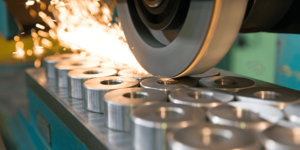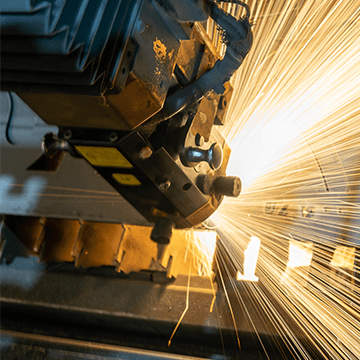- Solutions
- Products
- Community
- Resources
- Company
Create incredible candidate experiences that communicate your brand, mission, and values with recruitment marketing solutions.
Learn moreCommunicate effectively and efficiently with the candidates that can drive your business forward.
Learn moreSelect the right candidates to drive your business forward and simplify how you build winning, diverse teams.
Learn moreHelp your best internal talent connect to better opportunities and see new potential across your entire organization.
Learn moreCommunicate collectively with large groups of candidates and effectively tackle surges in hiring capacity.
Learn moreAccess tools that help your team create a more inclusive culture and propel your DEI program forward.
Learn moreRebound and respond to the new normal of retail with hiring systems that are agile enough to help you forge ahead.
Learn moreAccelerate the hiring of key talent to deliver point of care and support services that meet and exceed your promise of patient satisfaction.
Learn moreAttract and engage candidates with technical competencies, accelerate hiring for much-needed skills, and advance expertise within your valued workforce.
Learn moreSimplify how you recruit finance, insurance, and banking candidates with a unified platform built to match top talent with hard-to-fill roles.
Learn moreYour business strategy depends on your people strategy. Keep both in lockstep with the iCIMS Talent Cloud.
Learn moreBuild an engaging, high-converting talent pipeline that moves your business forward.
Learn moreDeliver the innovation your talent team needs, along with the global scale and security you demand.
Learn moreDeliver tailored technology experiences that delight users and power your talent transformation with the iCIMS Talent Cloud.
Learn moreThe #1 ATS in market share, our cloud-based recruiting software is built for both commercial and large, global employers.
Learn more Talk to salesAttract the best talent for your business with powerful, on-brand career websites that excite candidates and drive engagement.
Learn more Talk to salesBuild talent pipelines, engage candidates with multi-channel marketing campaigns, and use machine learning to automatically surface the right talent for the job.
Learn more Talk to salesEmpower candidates with automated self-service, qualification screening, and interview scheduling through an AI-enabled digital assistant.
Learn more Talk to salesSimplify employee onboarding with automated processes that maximize engagement and accelerate productivity.
Learn more Talk to salesCompliment your sourcing and engagement efforts with award-winning lead scoring and advanced campaign personalization.
Learn more Talk to salesImprove employee experience, retention, and reduce internal talent mobility friction with the iCIMS Opportunity Marketplace.
Learn more Talk to salesVerify skills with game-changing levels of automation and simplicity to improve the quality of hire at scale.
Learn more Talk to salesModernize, streamline, and accelerate your communication with candidates and employees.
Learn more Talk to salesTransform the talent experience by showcasing your authentic employer brand through employee-generated video testimonials.
Learn more Talk to salesGet robust analytics that help you make sense of your data and illuminate your talent pool.
Learn moreSimplify recruiting, dynamically engage talent, and reduce hiring bias with job matching and recruiting chatbot technology.
Learn more Talk to salesGet exclusive intel on industry and market trends along with expert one-on-one advice.
Learn more Talk to salesThe #1 ATS in market share, our cloud-based recruiting software is built for both commercial and large, global employers.
Learn more Talk to salesAttract the best talent for your business with powerful, on-brand career websites that excite candidates and drive engagement.
Learn more Talk to salesBuild talent pipelines, engage candidates with multi-channel marketing campaigns, and use machine learning to automatically surface the right talent for the job.
Learn more Talk to salesEmpower candidates with automated self-service, qualification screening, and interview scheduling through an AI-enabled digital assistant.
Learn more Talk to salesSimplify employee onboarding with automated processes that maximize engagement and accelerate productivity.
Learn more Talk to salesCompliment your sourcing and engagement efforts with award-winning lead scoring and advanced campaign personalization.
Learn more Talk to salesImprove employee experience, retention, and reduce internal talent mobility friction with the iCIMS Opportunity Marketplace.
Learn more Talk to salesVerify skills with game-changing levels of automation and simplicity to improve the quality of hire at scale.
Learn more Talk to salesModernize, streamline, and accelerate your communication with candidates and employees.
Learn more Talk to salesTransform the talent experience by showcasing your authentic employer brand through employee-generated video testimonials.
Learn more Talk to salesGet robust analytics that help you make sense of your data and illuminate your talent pool.
Learn moreSimplify recruiting, dynamically engage talent, and reduce hiring bias with job matching and recruiting chatbot technology.
Learn more Talk to salesGet exclusive intel on industry and market trends along with expert one-on-one advice.
Learn more Talk to salesHow a beloved restaurant hires 40,000+ annually with a great candidate experience.
Learn moreThousands strong, our global community of talent professionals includes creatives, innovators, visionaries, and experts.
Learn moreTogether we’re creating the world’s largest ecosystem of integrated recruiting technologies.
Learn moreExplore our network of more than 300 certified, trusted third-party service and advisory partners.
Learn moreUncover unique market insights, explore best practices and gain access to talent experts across out library of content.
Get resourcesExpert guidance about recruitment solutions, changes in the industry, and the future of talent.
Learn moreStay up to date with the latest terminology and verbiage in the HR software ecosystem.
Learn moreEmployers everywhere improve hiring efficiently and save money using iCIMS. Estimate the potential business value you can achieve.
Learn moreDive into the Class of 2023 Report highlighting this cohort’s expectations and where employers are willing — and able — to meet them.
Watch nowPartner with iCIMS to build the right strategies, processes, and experience to build a winning workforce.
Learn moreExpert guidance about recruitment solutions, changes in the industry, and the future of talent.
Learn moreThe iCIMS Talent Cloud delivers a secure, agile, and compliant platform designed to empower talent teams, job seekers, and partners with advanced data protection and privacy.
Learn moreView press releases, media coverage, and the latest hiring data. See what analysts are saying about iCIMS.
Learn moreiCIMS is the Talent Cloud company that empowers organizations to attract, engage, hire, and advance the talent that builds a winning workforce.
Learn moreGet to know the award-winning leadership team shaping the future of the recruiting software industry.
Learn moreWe believe the future of work isn't something that "happens" to you. It's something you create. We actively create the future of work with our customers every day.
Learn moreiCIMS is committed to being a responsible and ethical corporate citizen, which is why Environmental, Social and Governance (ESG) initiatives are strategic imperatives.
Learn moreStreamline your tech stack and take advantage of a better user experience and stronger data governance with ADP and the iCIMS Talent Cloud.
Learn moreThe combined power of iCIMS and Infor helps organizations strategically align their business and talent objectives.
Learn moreOur award-winning partnership with Microsoft is grounded in a shared desire to transform the workplace and the hiring team experience.
Learn moreOur partnership with Ultimate Kronos Group (UKG) supports the entire talent lifecycle by bringing frictionless recruiting solutions to UKG Pro Onboarding.
Learn moreLet’s get in touch. Reach out to learn more about iCIMS products and services.
Learn more

By 2025, there will be an estimated 3.5 million new manufacturing jobs. Many of these will center around advancing technology, increasing the demand for highly skilled and specialized talent. Currently, we’re on track to fill only about 1.5 million of these jobs. This will leave us with a skills gap of about 2.1 million quality, well-paying jobs.
According to the same report, by 2030, an estimated 2.6 million Baby Boomers will retire from their jobs in manufacturing, further compounding the labor shortage. This is at a time when 89% of manufacturers in the U.S. are considering reshoring jobs in an effort to reduce the risk to their supply chains.
And here you are, with open jobs in a plant that smells like ammonia just a few dozen miles from a tech metropolis where employers promise hybrid work, flexible hours, and a range of perks big and small. How do you compete? Should you even try?
It will take a little creativity and elbow grease, but there is a way to make manufacturing appeal to a wide range of potential talent who have never considered the industry. Keep reading to find out how.
Read the 2021 workforce report for more in-depth hiring insights.


One of the big reasons workers aren’t drawn to manufacturing is because they believe factory floors are noisy, hot, and loud. It’s an outdated perception – yet often it’s true. Plus, younger workers tend to be drawn to the businesses “changing the world.” In other words, big recognizable tech logos with pretty language about leading the way into the future and making an impact.
That’s hard to compete with when you run industrial chemical plants, assemble polymer injection molds, or produce roof insulation. As the workforce shrinks and automation increases, you’re increasingly in direct competition with those “saving the world” types in tech cities around the world.
In fact, the hardest manufacturing roles to fill are engineers of all stripes, whose positions take double the time to fill as assemblers and fabricators. Engineers with the right skills can have their pick of where they want to work. You can fight a bidding war or you can change the conversation and appeal to their desire to build, design, and create.
Sure, the opportunity to create exists in the world of software. But what manufacturers create is physical, tangible, real. You won’t win them all, but there are plenty who are going to opt for the latter. You just have to know how to tell the right story.


For manufacturers to compete going forward, they have to flip the script and highlight how they offer creative, innovative, and rewarding careers with the companies who build the world and keep the lights on.
Take the Creators Wanted campaign, for example. A partnership between the National Association of Manufacturers and Manufacturing Institute, Creators Wanted aims to:
Creators Wanted uses storytelling to fight the perception that manufacturing is tedious and unglamorous. The campaign looks beyond big names and logos and recasts the industry as the unsung hero of modern life and the economy.
We all remember the Great Toilet Paper Crunch of 2020. Panic buying set in, and shelves all over the U.S. emptied. Creators Wanted tells the story of how manufacturers stepped up and found creative ways to get products back on shelves despite pandemic restrictions and strained supply lines.
The message is a simple one: a career in manufacturing is essential and creative. You’ll get the opportunity to problem-solve and do something that makes a difference.
That matters when you consider that 87% of Americans say having pride in the company they work for is important to them, according to a LinkedIn report. Having a positive impact on society – while somewhat subjective – is one of their top priorities.


Manufacturers are struggling to find new workers. That much is true. But if we’re honest, they haven’t really had to worry much until now. That’s not to downplay the significant challenges in hiring manufacturing talent. The growing skills gap has been a slow-moving crisis.
As a whole, manufacturing has never really struggled with retention. This means they haven’t ever had to recruit on the same scale as retail or healthcare. In those industries, turnover is high, and workers are more willing to change employers for marginal pay increases.
Success with retention is due partly to generational and geographical factors. A lot of manufacturing employees are Baby Boomers. Overall, they may be more inclined to stick around for the job security and solid benefits that careers in manufacturing typically offer.
Given a long enough timeline, retention is always going to be a losing battle. However hard you hang on, your employees are eventually going to retire. Your noisy production floors will get a lot quieter in the next few years unless you can replace the life-long employees after they decide to step back and kick up their feet in the sun.
It’s time to start thinking about how you can attract younger candidates.


Millennial workers are different. At this point in their professional lives, many are driven by climbing the career ladder quickly. For some, this means job-hopping until they reach a more senior level. The challenge is convincing them manufacturing offers the chance at a successful career.
There are also the youngest workers to consider, Generation Z, the oldest of whom are just starting to graduate and enter the workforce. The pandemic has scrapped their plans and delayed others. As a result, recent grads may be more open-minded and pragmatic about finding a job today than they were just a few years ago.
According to our Class of 2021 report: “Students in all markets are increasing the number and type of jobs they apply for in response to the pandemic and economic uncertainty.” This presents an opportunity to pull in talented candidates who care more about working than where they work, at least for the time being.
Mentoring programs are an inexpensive and highly effective way to increase engagement in younger employees by building connections and honing their skills. One study at Sun Microsystems found that employees who had a mentor were more than 5 times more likely to get a raise and 6 times more likely to get promoted than those without a mentor. The mentors did even better in terms of raises and promotions. The study also found benefits to retention, with 72% of mentors and 69% of those with mentors sticking around, compared to 49% of those not participating in the program.
Flexibility in the workplace often gets associated with remote work. Obviously, that’s not going to be a fit for most manufacturers. However, flexibility means different things to different people. For younger candidates, it means having access to childcare – offering childcare on-location or reimbursements can make a big difference. For others, it might mean having the option to trade shifts or switch to a new shift as needed. Find what your employees value most and get creative – some of the best ideas may come from the employees themselves.
Taking any new job can feel like a big decision. It can be easy to blame younger candidates’ hesitation on a lack of interest, but that’s not always the case. Sometimes all it takes is a little push in the right direction to get someone on board. Offering sign-on bonuses, financial incentives based on hitting production targets, or relocation fees can help overcome hesitation and make candidates feel valued.
Some of your younger candidates may have aspirations they aren’t yet qualified for. Making a commitment to train and invest in them is an excellent way to motivate and retain them while grooming them for more complex, niche, or skilled roles. For example, Aberdeen Strategy & Research found that employees stick with an employer longer when there is alignment between their career goals and management’s objectives, visible career tracks, and training and development opportunities. Don’t be shy about it either – let younger workers and candidates considering a career change know about the programs you offer.
Younger workers don’t remember a time before smartphones. They also started to enter the workforce at a time when “essential workers” were finding themselves in the spotlight.
It may seem counterintuitive, but if there was ever going to be a generation primed for the message that manufacturing offers a creative, fulfilling career doing honest work that benefits their communities and needs to be done, this is it.
Ready for more hiring insights?
Check out our 2021 workforce report for in-depth insight and analysis on the trends shaping the post-pandemic labor market.
and receive free tips on how to attract, engage, hire, & advance the best talent.





